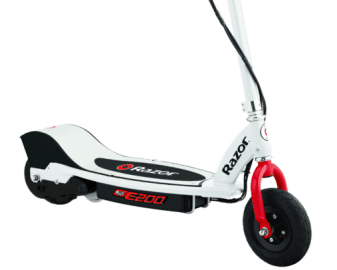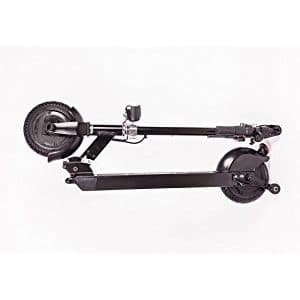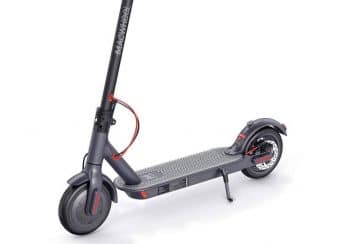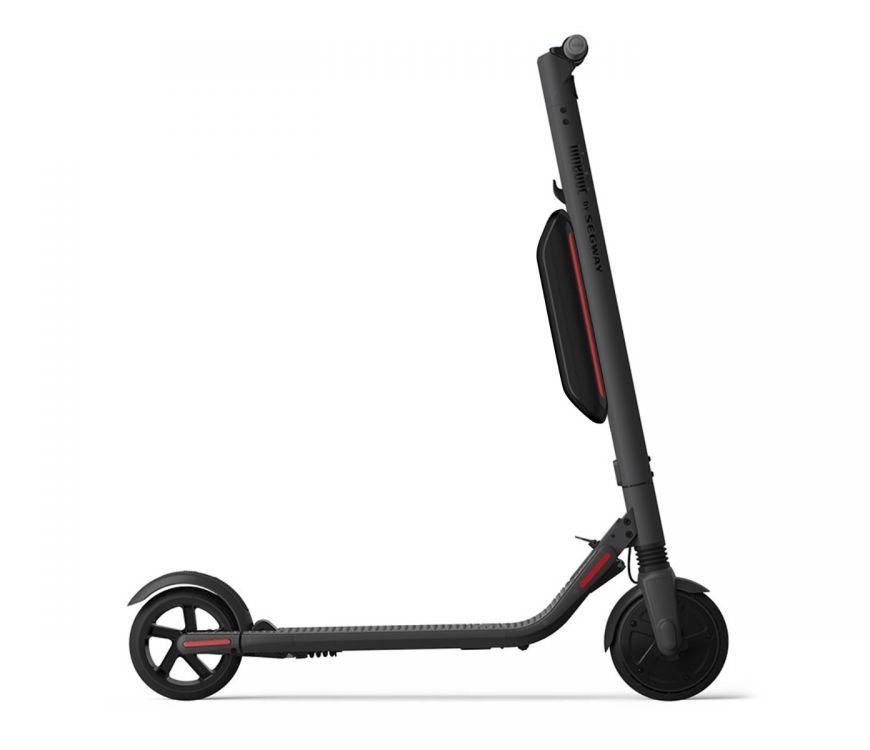What you need to know about electric scooters
Electric scooters (or e-scooters) seem to be taking over the world little by little. In most major cities you can see scooters buzzing up and down roads, pavements, and bike lanes. They are the new way to get around cities quickly, safely, and without building up a sweat.
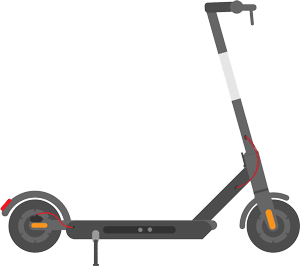
Why electric scooters?
Some of the reasons include:
- Fast and easy to ride
- Environmentally friendly
- Avoid traffic
- Portable
- Fun to ride
- Safe
- Low maintenance costs
Electric scooters seem to be a great option for both the public and governments as we search for transport with a low carbon footprint. More cities are prioritising these progressive modes of transport by limiting car traffic and expanding bike lanes.
Whether for commuting to work or school, or just for the thrill of the ride, these electric machines have come a long way since the first ones emerged more than 20 years ago. Now electric scooters are made for everyone’s needs - city commuting, off-road, for adults, teens and kids, high-speed, with seats, the list goes on…
Here’s everything you need to know about electric scooters.
Portability
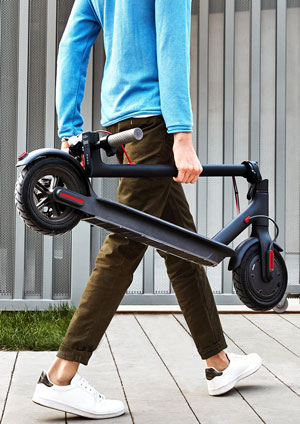
Electric scooters are usually too heavy to carry for long periods of time - the average scooter weighs 11-14 kg (25-30 lb). But foldable scooter models help with this issue. The Gilion Dolly, for example, can be folded and towed like a suitcase.
Also don’t worry, briefly carrying an electric scooter up stairs or through no-ride-zones isn’t a problem. And in most places where riding is forbidden, you can simply push the scooter alongside you as you walk.
So as you can see, electric scooters have their advantages over other forms of personal transport. They take up significantly less space than a bicycle, and if the scooter is foldable it becomes even more compact - ideal for storing at home, the office, or in the classroom. Electric scooters can even be taken on the bus or subway.
Speed
3...2...1...GO!
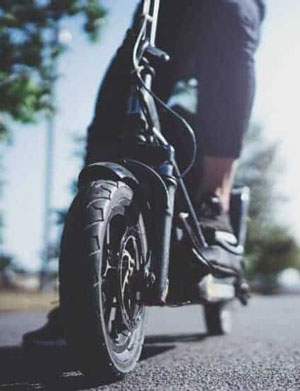
The average top speed of an electric scooter is 24-32 kph (15-20 mph). But there are scooters out there that can go almost 100 kph (60 mph).
The question is: “What do I want an electric scooter for?”
If you’re commuting around a city your speed will likely be limited, so having a super-fast electric scooter doesn’t make a lot of sense. It’s like buying a Ferrari for city commuting - you’ll look cool, but you’ll never have the chance to truly test its power.
But if you live in a city with lots of hills, the extra power will help a lot. The average scooter doesn’t handle inclines over 15 degrees very well.
If you want an electric scooter for off-road adventures, you’ll want some added speed too. Look for scooters with high top speeds of 65 kph (40 mph) or more. Also, take into account the scooter’s tyres and how far the scooter can go before the battery dies.
Distance
There are a lot of factors involved in determining the range of an electric scooter - rider/scooter weight, surface incline, surface quality, tyres, motor, battery, etc. Whatever the manufacturer says a scooter’s range is, take it with a grain of salt. A company’s tests are under perfect conditions, and after all, of course they think they think their product is great.
What is the range of an electric scooter?
- On the low-end, scooters will go between 12-24 km (7.5-15 miles) on a single battery charge
- The average scooter will go about 30 km (18.6 miles)
(e.g. Macwheel MX1 and Xiaomi Mi)
But there are exceptions like the Segway Ninebot ES4, which can reach 45 km (28 miles) - On the high-end there is the Wolf Warrior II, which can travel a whopping 150 km (93 miles)
So an electric scooter can take you pretty much wherever you want to go. Our advice remains the same. Get the scooter that suits your needs and budget. What do you want the scooter for and how far do you want to go?
Motor

What are watts and how many do I want?
Watt is the unit used to measure power. This is determined by measuring the energy per second that something consumes. In electric scooters, this ‘something’ is the motor. The higher the motor’s wattage, the more energy it will consume and therefore the more power it will produce.
So the more watts it has, the faster the scooter will go?
In general, yes. But not always.
For example, two different motors with the same number of watts could produce different levels of power. A motor’s performance is determined by how efficient it is. An inefficient motor could have a lot of wasted energy that isn’t providing the scooter with speed.
So how can we use motors to compare electric scooters?
Though a motor’s wattage isn’t the only thing that determines a scooter’s power, it is a good indicator. A motor with a high wattage will usually mean the scooter will accelerate more quickly, be able to carry more weight and be better travelling uphill.
Of course, the energy for the motor comes from the battery - and that’s what’s next!
Battery
A scooter’s battery can separate the low-end scooters from the best ones. Most scooter batteries charge in under 3 hours, but higher-end batteries can take as long as 8 hours to fully charge.
Cheap, low-quality batteries die faster (they have less charging cycles) and limit the distance the scooter can travel before needing a charge. On the other hand, good quality batteries can last for years when properly taken care of.
So how do you care for a battery?
Scooter manufacturers highly recommend using the charger provided - this is no joke. Using a different brand’s charger or a cheap knock-off can cause damage to the battery and presents a heightened risk of fire. In all cases check your scooter’s instruction manual for recommended battery care.
What makes a good battery?
There are many different batteries out there and the technology is constantly advancing. So we suggest researching your dream scooter’s battery before buying.
Right now, Lithium-ion batteries are the cool kids on the block in the electric scooter market. They’re fast-charging, light-weight, and can even hold charge during long periods of inactivity. Of course, because of this, they are expensive batteries, and so drive up the price of the scooter.
Safety

It’s important to note that electric scooters can be dangerous when used irresponsibly. They can result in serious injury for the rider or pedestrians if the proper precautions aren’t taken. Please avoid riding at high speeds on pavements/sidewalks and in pedestrian zones.
We highly recommend riders check their local area’s regulations before riding an electric scooter in public. As this mode of transport is relatively new, many cities have not set specific rules on e-scooter use. Scooters are often given the same rights as bicycles in public spaces. Make sure you know the law in your area to avoid on the spot fines.
The BBC has an interesting article from June 2020 on using electric scooters in cities across the world.
Safety equipment
At a minimum, we recommend wearing a helmet when riding. Falling off a scooter at top speed can do serious bodily harm. The other essential piece of safety equipment is having lights that make you visible - this includes during the day. Many scooters have in-built lights for exactly this reason, but some have to be bought separately and installed.
Other safety equipment such as knee-pads and elbow-pads is also available.
Safety certifications
The two most popular safety standards for electric scooters cover the electrical circuitry and battery.
The UL2271 certification is specifically battery related. Batteries approved by this certification have been tested in extreme conditions to ensure that battery overheating and explosions will not occur.
The UL2272 certification is specific to E-Mobility devices. It covers the relationship between the charger, battery, and other circuitry in the scooter. Tests are run on energy consumption and to prevent electrical shock hazards.
Bluetooth and App connectivity
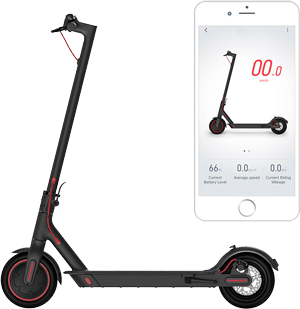
Many electric scooter brands have made apps that allow riders to connect to their scooter wirelessly from their smartphone (see the Xiaomi Mi electric scooter).
Common app features include checking real-time statistics such as current speed, battery status and distance travelled. As well as adjusting the braking style and light settings, enabling cruise control, setting a password to lock the scooter, seeing your overall average speed and more.
The Segway Ninebot S self-balancing scooter even allows you to control the scooter wirelessly from your phone. It’s like something out of a James Bond film!
Other self-balancing scooters (or hoverboards) have built-in speakers. So you can connect to the scooter through Bluetooth and play music out of the scooter.
Riding Experience
For starters, all types of electric scooters are fun to ride. But what differentiates the smooth rides from the not so smooth rides?
Electric scooters generally have two types of tyres: air-filled rubber tyres and solid tyres. Rubber tyres offer added suspension, so you won’t feel every bump in the road. But the obvious benefit of having solid tyres is that they require less maintenance - it is recommended to check the air pressure in rubber tyres regularly.
In many scooters, suspension is added in order to provide a smoother riding experience. The all-important question:
- What terrain will you be riding on?
If the scooter is for general commuting on flat (or nearly flat) city streets, then added suspension won’t be necessary. But if you want a scooter to climb hills and handle rough terrain, you’ll have to spend a little more money on good suspension and a powerful motor.
Price
With all kinds of brands fighting for electric scooter supremacy, there are all kinds of electric scooter prices too. To give you an idea, it’s difficult to find a decent electric scooter for under $100 USD (£77 / 85€) - though the Razor Power Core E90 for kids comes close.
On the other hand, the Dualtron Thunder costs more than $7,000 USD (£5,000 / 6.000€). But don’t let that scare you. The ‘normal’ electric scooter that you see on the street costs around $350 USD (£270 / 300€).
Why such a wide range of prices?
As you can imagine, the quality of the design and parts used count for a lot. Long-lasting, light-weight batteries, for example, are expensive - they can be $1000 USD (£765 / 850€) by themselves!
Maintenance
Obviously, compared to maintaining a car, maintaining an electric scooter is much more cost-efficient. The average electric scooter will require minimal maintenance if well cared for.
For electric scooters with rubber, air-filled tyres it’s important to check each tyre’s air pressure regularly, and adjust it as needed. Read the scooter’s instruction manual (or check the tyre itself) to find the recommended air pressure.
It is also important to check that screws are tight about once a month. Like checking tyre pressure, this takes about 5 minutes.
More long term maintenance includes changing a worn-out wheel/tyre or changing the light. But that’s nothing compared to regular car maintenance. And, in our experience, electric scooters are more reliable than bicycles of a similar price.
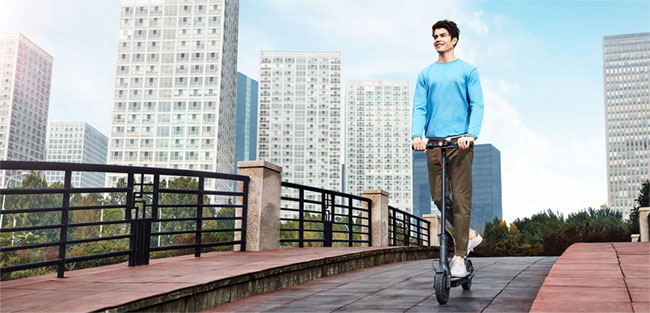
Final Thoughts
So as you can see, there is a scooter for everyone and every occasion.
Like with every purchase, we encourage you to think about what you want a scooter for. Then weigh up the pros and cons to find the right electric scooter for you.
Please share your thoughts with us. We love hearing about your electric scooter experiences, and we’d be happy to answer any questions you may have.
